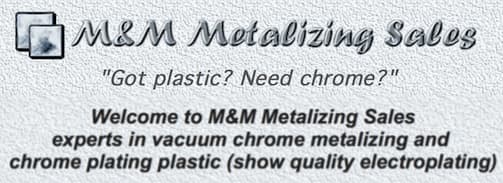
Curated with aloha by
Ted Mooney, P.E. RET

The authoritative public forum
for Metal Finishing 1989-2025

-----
The inherent danger of not heat treating chromed parts that operate under severe stress
I am currently modifying a vehicle for show and drive purposes and wish to chrome the rear differential drive shafts and accompanying components including coil springs (Jaguar). I have been informed that once chromed, the parts require heat treatment to eliminate hydrogen embrittlement. Does this process need to be done shortly afterwards or can it be done some time subsequent? I don't want to get it done and then suffer a Catastrophic suspension failure as the plater did not understand the process. How is the heat process undertaken?
Mark TAYLORpanel beater - Brisbane, Q'ld, Australia
2003
Dear Mark,
The hydrogen embrittlement you speak of, does not, in all truthfulness, represent a threat to your endeavors. In my twenty six years of electroplating and hot rodding experience, I have not seen or heard of one incidence of this. I have chromed coil and leaf springs, fifty year old I beam axles , whole jag diffs and suspensions for drag cars. Never a failure, heard, seen or rumoured! What DOES cross my mind through experience, is, "HOW LONG BEFORE THIS LOT ENDS UP WRAPPED AROUND A POLE" ! And there's been a whole lot more of those, believe me. A word of advice. Insist on duplex nickel chrome. Less chance of peeling or rusting.
Mark Hunterbrightwork - N.S.W., Australia
2003
----
Ed. note: If readers don't know the meaning of "duplex nickel chrome" or would just like a good understanding of chrome plating, please see our FAQ: "Introduction to Chrome Plating". As for no risk of hydrogen embrittlement, that's Mark's stand, not ours.
Q, A, or Comment on THIS thread -or- Start a NEW Thread
